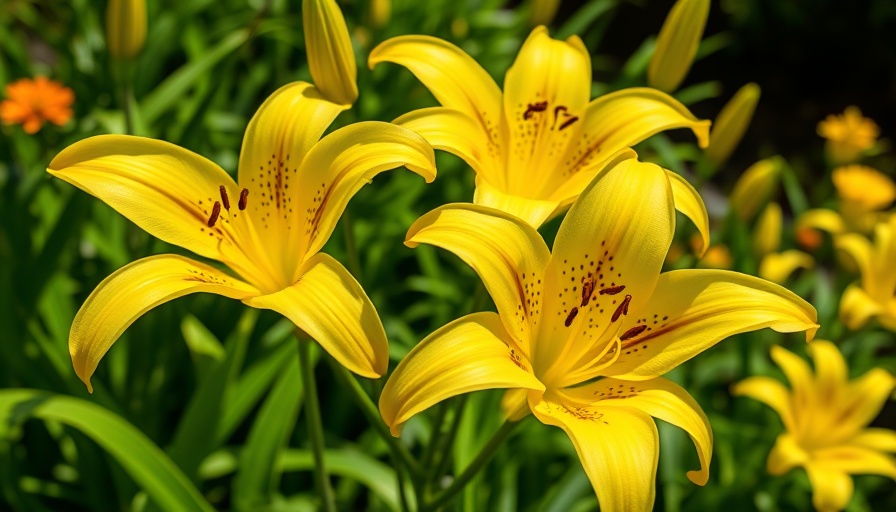
Unveiling the Beauty of Turk’s Cap Lilies
Are you dreaming of a garden where vibrant blooms steal the show? Turk’s cap lilies, scientifically known as Lilium martagon, can turn that dream into a reality. These elegant flowers boast petals that elegantly curve backward, forming a striking cap-like appearance. With their rich hues ranging from deep mauve to sunny yellow, they not only add visual splendor to any landscape but also create an inviting atmosphere for pollinators like bees, butterflies, and hummingbirds.
Why Choose Turk's Cap Lilies for Your Garden?
These perennial beauties are hardy and adaptable, thriving in USDA zones 3 to 9. Native to a broad range of climates from Portugal to Mongolia, they prefer well-draining, humus-rich soil in full sun to light shade. Turk's cap lilies can grow between three to six feet tall, making them perfect focal points that draw the eye. Their ability to produce as many as 50 flowers per stem, especially in hybrid forms, ensures a profusion of blooms that lights up your garden through early to midsummer.
Getting Started: Quick Steps to Planting
When you’re ready to add these stunning lilies to your garden, start with healthy bulbs. Here's a straightforward guide to ensure your successful planting:
- Soil Preparation: Ensure your soil is loose and rich in organic matter. Test the pH, aiming for a range of 6.5 to 7.2.
- Spacing: Plant bulbs about 12–18 inches apart to give them room to flourish.
- Sunlight: Choose a spot that receives full to part sun for optimal blooming.
- Watering and Fertilization: Water them well after planting and consider using an organic fertilizer designed for flowering bulbs to promote growth.
Cultivating Health and Joy: The Long-term Care of Turk's Cap Lilies
After planting, the journey doesn't end; nurturing these beauties is a rewarding process. Consistent watering during dry spells is crucial, but be cautious not to overwater as it can lead to rot. To enhance blooms, apply a balanced fertilizer early in the growing season. Regularly remove spent flowers to encourage new ones and maintain the plant's vigor. Turk’s cap lilies are relatively pest-resistant, but keeping an eye out for common garden invaders is always wise.
Future Blooms: Propagation Techniques Explained
If you fall in love with these vibrant lilies, you might want to propagate them. Here’s how:
- Offsets: After a few seasons, your lilies may produce bulb offsets. Carefully dig them up and replant them to start new plants.
- Seed Harvesting: Allow the spent flowers to form seed pods, which can be harvested. Plant the seeds in a humus-rich substrate in a cool, shaded area, and keep them moist until germination.
Embracing Community and Green Practices
Growing Turk’s cap lilies isn't just about beautifying your garden; it’s an act of community and connection to nature. By encouraging pollinators, you contribute to the ecosystem, promoting biodiversity in your local area. Sharing tips, seeds, or bulbs with your neighbors fosters a supportive gardening community, enhancing relationships that extend beyond the soil.
Your Turn to Bloom
Now that you’re equipped with knowledge on how to grow Turk’s Cap lilies, it’s time to embark on your gardening adventure. Transform your outdoor space into a lush sanctuary filled with color and life. Embrace the joy this involves, learning through successes and challenges. As you dig into the soil and nurture your plants, you’ll uncover not just the beauty of blooms but the experience of growth itself.
This season, take action! Begin your journey toward a vibrant garden by planting Turk’s cap lilies. Your efforts will blossom not only in stunning visual displays but also in a deeper connection to nature and community.
 Add Row
Add Row  Add
Add 




 Add Row
Add Row  Add
Add 

Write A Comment